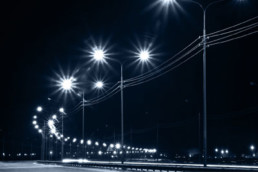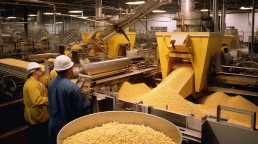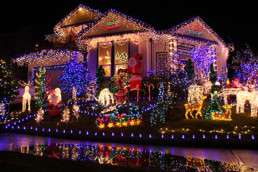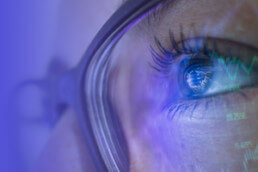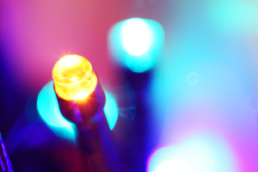The Natural Consequences of Unnatural Light
Picture a suburban street at midnight, pitch black except for a dozen or so suspended glowing orbs casting a cone of light around them. This is a common scene pretty much anywhere; electric street lights have been around your whole lifetime. As far as human technology goes, these have little impact on an ecosystem, right?
But a little impact can still be a big deal.
Aside from attracting moths and other flying insects, street lamps and artificial light can influence an environment’s food chain in ways we never anticipated. A recent study from the University of Exeter in the UK examined the impact of both LED light and sodium-vapor light—which output white and amber light, respectively—and how they affected plant and insect life in a controlled environment.
The subject was the pea aphid, a sap-sucker that feeds on plants like greater bird’s foot trefoil. Artificial light reduced flowering in the trefoil, the study found, depriving the aphids of their primary food source.
“Many direct effects of night-time artificial light on plant and animal species have been documented, and there is a growing body of evidence concerning the physiological and behavioral impacts of light pollution,” the study concluded.
Of course, these are not the only effects artificial light has on various species of animals—not by a long shot. In the recently aired Planet Earth 2, the documentary captured footage of turtle hatchlings in Barbados drawn to street lamps they mistook for the shimmer of moonlight on the ocean, their intended destination. Many of the poor hatchlings were crushed by traffic on a busy roadway, or trapped in sewage drains, because of the siren’s call of artificial light.
Nocturnal animals also suffer from these unwanted nightlights, as they suddenly don’t know what time of day it is. Birds that travel by night rely on moon and starlight to navigate, and millions die every year striking into lit-up structures, or because urban light confused their migratory patterns and caused them to leave too late or early in the season.
Improperly measured, light can wreak havoc on an ecosystem. The University of Exeter study used spectrophotometers to measure the impact of street lamps on roads at night in Cornwall. It goes to show the right equipment can be a game-changer in how we learn about the way we affect our environment. Illuminance spectrophotometers like the CL-500A will continue to play a significant role in creating a brighter, and more eco-friendly, future.
